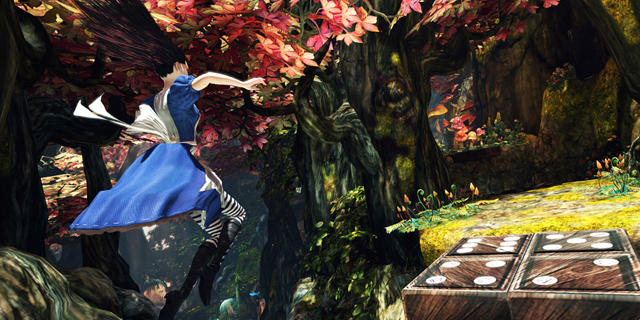
Alice: Madness Returns is a sequel nobody could have seen coming, especially eleven years after the release of the original. American McGee’s Alice was a cult hit and garnered a lot of attention for designer American McGee, featuring a darker, more sinister version of Lewis Carroll’s classic book. Following the events of the first game, Madness Returns focuses on Alice as a teenager, recovering from her traumatic past.
It isn’t long before she slips back into Wonderland where a new disaster awaits her while also trying to figure out the mysteries of her past that haunt her still. It’s a nightmarish story that, while not particularly memorable in terms of writing, stands out based on its tone and creativity alone.
The visuals are the strongest aspect of the game and they almost always feel fresh with every new area you discover. The unique styles of each part of Wonderland that Alice visits are significantly more bright than most of the original game’s gorgeous, but somewhat drab environments. Wonderland feels more vibrant this time around, and combining that with the dark tones of the story and the even darker enemies makes for a very interesting contrast.
The gameplay is divided into two major sections: platforming and combat, with the occasional mini-game and puzzle to help keep things fresh. The combat is very fast-paced with an excellent variety of enemies and a decent selection of different weapons. Throughout Alice’s journey, you’ll find plenty of collectibles, including teeth, which allow you to upgrade the different weapons. These upgrades are essential in the later sections of the game when the combat can get downright brutal.
The platforming controls feel great, and Alice’s ability to jump multiple times in a row is necessary in some of the tougher sections of the game. It’s never too challenging thanks to pretty precise controls, but there are sections that are pretty poorly designed, leaving you without a clue about where to go or how to get there. Thankfully, it’s very forgiving and, if you fall, it will immediately restart you on the closest platform. It falters at times, but the platforming feels like a large improvement over the original.
Alice also has the ability to shrink whenever she wants, allowing her to squeeze through hidden areas and also discover secrets. When you shrink, you’ll also be able to see hidden platforms and signs pointing you towards secret collectibles hidden throughout each level. There is the occasional puzzle or two, none of which are particularly challenging, but they offer a nice diversion from the jumping and fighting.
The biggest problem with Madness Returns is how tedious the game tends to get. The game is pretty lengthy, clocking in at around 12 to 14 hours (maybe more if you love collectibles), and it begins to feel a bit too long once you hit the halfway point. It’s always nice to see a game longer than eight hours these days, but sometimes there can be too much of a good thing.
Despite some problematic platforming and a tendency towards tedium, Alice: Madness Returns is a worthy follow-up to the original. It also stands on its own as an enjoyable action-platformer with a twisted story and gorgeous visual design, so even if you have no experience with the original game, it is still worth checking out.
Pros: Gorgeous art style, combat is fast-paced and fluid
Cons: Some platforming sections poorly designed, tedium sets in due to lack of variety



















